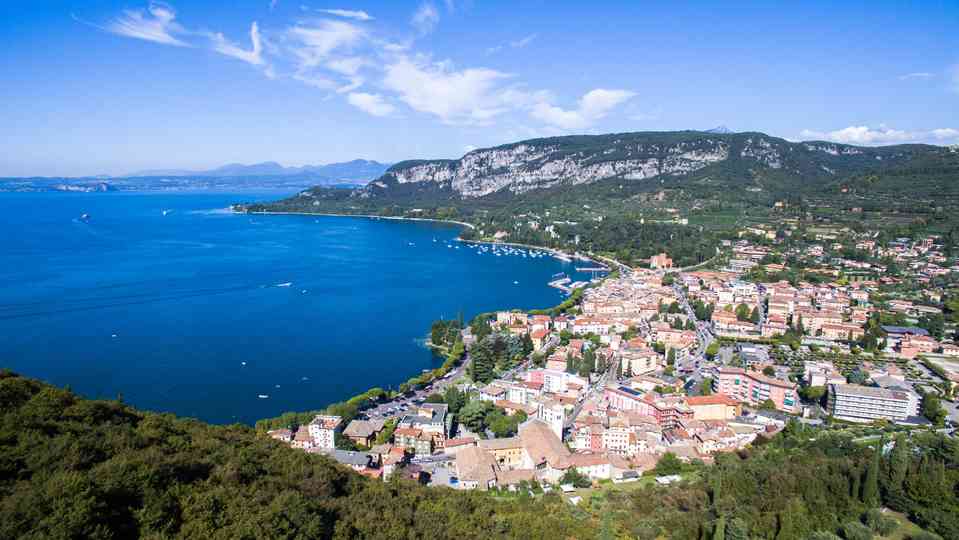From up there, the view of Lake Garda, the meadow overlooking Garda town, and the beautiful bay under your feet is sublime. The first utterance of anyone making it to the top is always the same: WOW!
What exactly are we talking about? The Rocca Vecchia is one of the most famous and enchanting natural viewpoints in the lake area, as well as one of the destinations of excursions organized by Boffenigo and led by Vanessa, our B-Family Guest Experience Manager!
“I recently accompanied an American family to the Rocca”, Vanessa tells us, “We left Hotel Boffenigo, following the path through the vineyards up to the locality of Monvei, before climbing the road up to Saint George’s Hermitage. Then, we continued though the woods to the Rocca. After a short break, we finished the journey by talking about the history of the old fortress, which offered great defences at the height of the Rocca hill. From the top, the view took everyone’s breath away … what a show! Our customers really enjoyed the excursion, and wished to extend their stay in the hotel, enchanted as they were by the beauty of the local area, but, unfortunately, they had already booked the continuation of their holiday in Venice!”
Garda’s Rocca: origins and historical importance
The Rocca di Garda is an outcrop of rock between the towns of Garda and Bardolino that overlooks the waters of the lake. It consists of two main summits: Rocca Vecchia and Saint George’s Hermitage. The enchanting route there winds its way through woods, vineyards, farmhouses and medieval and military archaeological remains. The area falls within a natural European Site of Community Interest (SCI).
The historical importance of this outcrop of rock comes from the fact that, in the Lombard period, in the 5th century AD, a military fort was erected on its top, of which only a few masonry traces remain. The name of the rock and of the lake itself both derive from this old fort. Moreover, the Rocca has traces of human settlements dating from the Bronze Age and military, religious and funerary artefacts from Roman times.
In just a few years, the fort became a bulwark of fundamental strategic importance. The name ‘Garda’, indeed, comes from the old Germanic word ‘Warda’ or ‘Warte’, meaning ‘guard’ or ‘fortress’. At first the name was applied to just the local area, but then began to be used for the whole lake, gradually replacing the old Latin name ‘Lacus Benacus’.
According to several historical sources, Adelaide di Borgogna, widow of Lothair II and future wife of Emperor Otto I, was imprisoned in the fort by the King of Italy, Berengar II, from the 19th of April to the 26th of August 951 AD. In 1193, Emperor Henry VI sold the Rocca di Garda to the City of Verona for 700 Silver Marks. The fort was finally demolished for unknown reasons by its own defenders at the beginning of the thirteenth century, probably during the empire of Otto IV.
Excursion details:
Total duration: 2 hours and 45 minutes
Maximum altitude: 280 metres
Difficulty: medium difficulty
Route type: suitable for people used to walking in hills and mountains
Clothing: comfortable walking clothes
Equipment: walking shoes for uneven rocky paving










